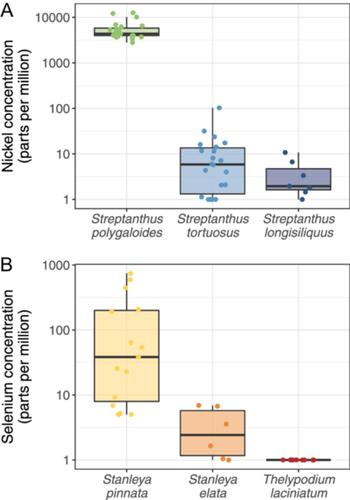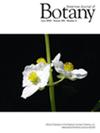Hyperaccumulation of nickel but not selenium drives floral microbiome differentiation: A study with six species of Brassicaceae
Abstract
Premise
Intraspecific variation in flower microbiome composition can mediate pollination and reproduction, and so understanding the community assembly processes driving this variation is critical. Yet the relative importance of trait-based host filtering and dispersal in shaping among-species variation in floral microbiomes remains unknown.
Methods
Within two clades of Brassicaceae, we compared diversity and composition of floral microbiomes in natural populations of focal nickel and selenium hyperaccumulator species and two of their non-accumulating relatives. We assessed the relative strengths of floral elemental composition, plant phylogenetic distance (host filtering), and geography (dispersal) in driving floral microbiome composition.
Results
Species in the nickel hyperaccumulator clade had strongly divergent floral microbiomes, the most of that variation driven by floral elemental composition, followed by geographic distance between plant populations and, lastly, phylogenetic distance. Conversely, within the selenium hyperaccumulator clade, floral microbiome divergence was much lower among the species and elemental composition, geography, and plant phylogeny were far weaker determinants of microbiome variation.
Conclusions
Our results show that the strength of elemental hyperaccumulation's effect on floral microbiomes differs substantially among plant clades, possibly due to variation in elements as selective filters or in long-distance dispersal probability in different habitats.


 求助内容:
求助内容: 应助结果提醒方式:
应助结果提醒方式:


